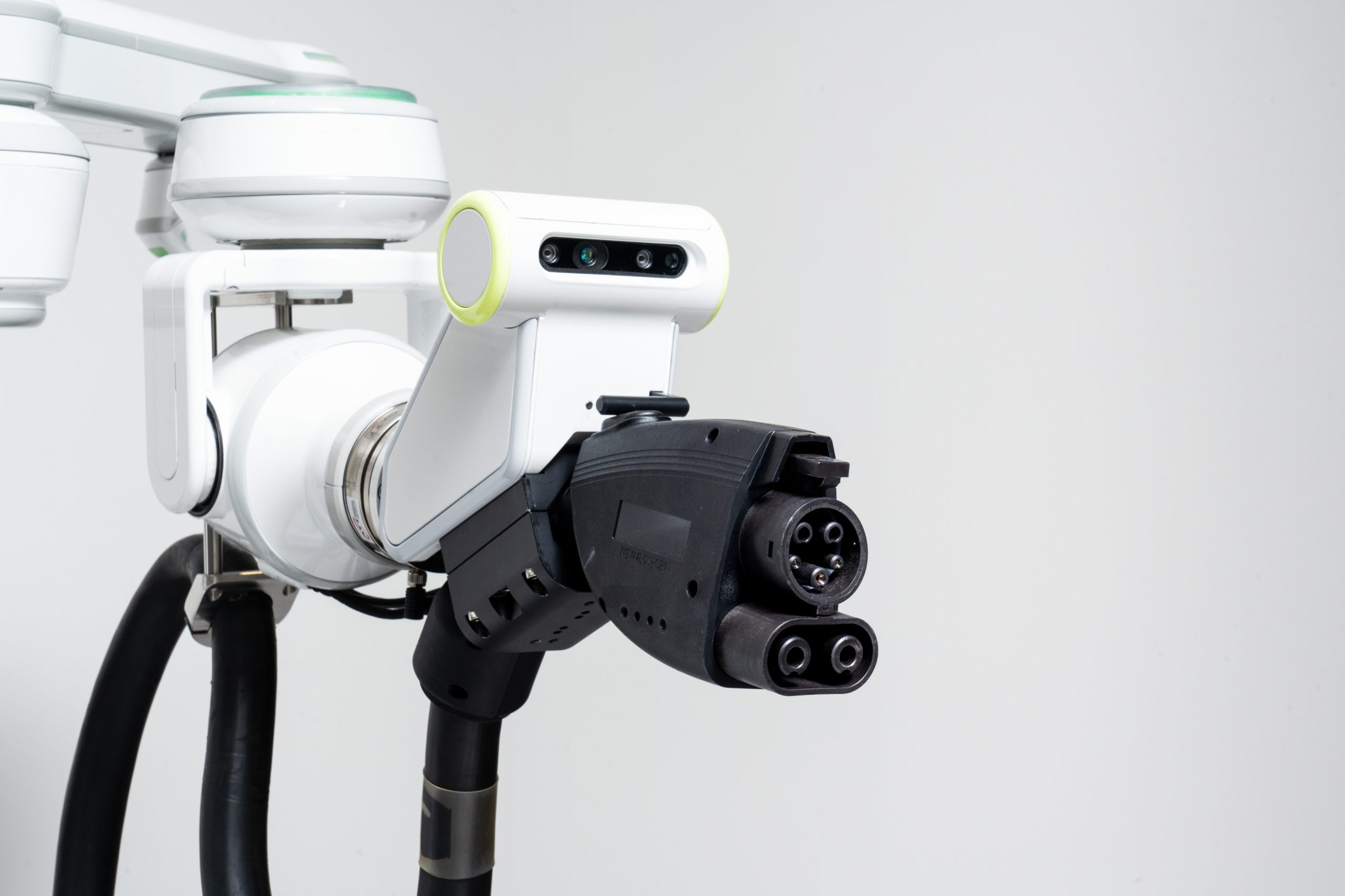
What if there were a robot that automatically charged your electric vehicle simply by parking?
On the 21st, Hyundai Motor Group released a demonstration video showcasing their autonomous electric vehicle charging robot.
This robot, which acts as a one-armed system, connects the charging cable from the charger to the vehicle’s charging port, completes the charging process, and then returns the charger to its original place. Hyundai first revealed a computer-generated video of this technology last July.
The recently released video begins with the Hyundai Ioniq 6 autonomously parking in an electric vehicle charging zone.
Once the vehicle is parked in the charging area, the charging robot communicates with the car to open the charging port cover. It then calculates the precise position and angle of the charging port using an internal camera.
Next, the robot picks up the charger, connects it to the vehicle’s charging port to start charging, and once charging is complete, it removes the charger, places it back, and closes the vehicle’s charging port cover, executing the entire charging process autonomously.
At first glance, the electric vehicle charging robot may seem simple, but it embodies advanced robotic technology. There are numerous variables that need to be considered, including the vehicle’s parking position, the shape of the charging port, weather conditions, obstacles, and the weight of the charging cable.
For the robot to connect the charger to the charging port effectively, sophisticated software technology that can calculate these variables is essential. To this end, Hyundai has developed an algorithm based on 3D camera AI technology, enabling the next-generation control technology to ensure the robot can accurately connect even heavy chargers.
Furthermore, considering that most electric vehicle chargers are installed outdoors, Hyundai has established an outdoor electric vehicle charging station at its research institute to continuously assess performance in various environments. As a result, the electric vehicle charging robot has secured an IP65 water and dust resistance rating and has seen significant improvements in performance, allowing it to operate reliably in both high and low temperature environments.
The first digit of the rating indicates protection against solids, and the second digit indicates protection against liquids. A rating of 6 for solids indicates the highest level of protection from small dust particles, while a rating of 5 for liquids means it can withstand water sprayed from any direction.
Additionally, Hyundai has installed safety poles equipped with laser sensors around the robot to detect the approach of obstacles, thus preventing any potential safety accidents.
Hyundai is optimistic that the autonomous electric vehicle charging robot will significantly enhance convenience for electric vehicle charging. They also envision combining this technology with autonomous parking systems or mobile rails to enhance its utility by charging multiple parked electric vehicles sequentially.
A representative from Hyundai Motor Group stated, “As fast charging technology evolves, the charging cables become thicker and heavier, and sometimes it can be challenging to accurately locate the charging port’s position and angle at night. If the robot takes over the charging process, it can greatly reduce these inconveniences for customers.” They also assured that the company would continue to enhance the technology to enable customers to encounter a robot at charging stations soon.
The newly unveiled electric vehicle charging robot will be showcased at Hyundai’s exhibition booth during the ‘2023 Seoul Mobility Show,’ which will take place from March 31 (Friday) to April 9 (Sunday) at KINTEX in Ilsan, Gyeonggi Province.
Lee Sang-jin daedusj@autodiary.kr
